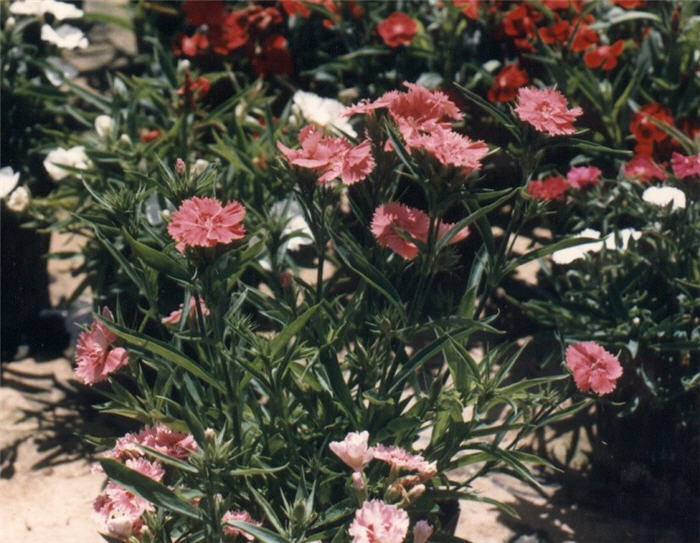| Botanical Name: Dianthus caryophyllus | |
| Common Name: Border Carnation |

-
Anatomy
-
Culture
-
Design
Plant Type
Annual
Height Range
Under 1'
Flower Color
Pink, Red, White
Flower Season
Spring
Leaf Color
Blue Green
Bark Color
n/a
Fruit Color
n/a
Fruit Season
n/a
Sun
Full, Half
Water
Medium
Growth Rate
Fast, Moderate
Soil Type
Sandy, Loam
Soil Condition
Average, Rich, Well-drained
Soil pH
Basic
Adverse Factors
n/a
Design Styles
English Cottage, Formal
Accenting Features
Fragrance, Showy Flowers
Seasonal Interest
Spring
Location Uses
Entry, Perennial Border, Patio, Raised Planter
Special Uses
Container, Cut Flowers
Attracts Wildlife
n/a
Information by: Stephanie Duer
Photographer:
Photographer:
-
Description
-
Notes
Border carnations or a tender carnation typically used as annuals in our harsh winter climate. They have all the characteristics of the tougher dianthus, such as fragrant flowers, an array of pinks and reds, attractive blue-grey foliage, and a dense mounding habit, but without the AI nice choice to edge borders or pathways, or in containers.
Grow in average, medium, well-drained soils in full sun. Superior soil drainage is the key to growing these plants well; heavy clay soils must be amended prior to planting. these plants are often grown from seed and treated as an annual in cold winter climates. Not as low-water as are their perennial cousins.